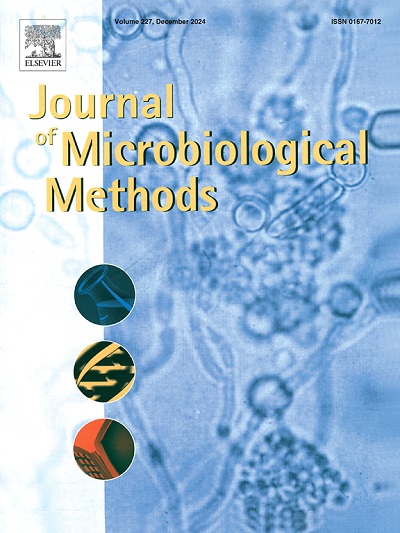Evaluating the impact of temperatures and exposure times on probiotics viability under pre- and post- technological processes
IF 1.9
4区 生物学
Q4 BIOCHEMICAL RESEARCH METHODS
引用次数: 0
Abstract
Microorganisms such as probiotic yeasts and lactic acid bacteria are capable of surviving—and in some cases thriving—under challenging conditions, including varying feed compositions, moisture levels, and high temperatures typically encountered during feed processing, such as steam pelleting. The primary objective of this study was to evaluate the effect of different temperatures and exposure times on the viability of yeast- and lactic acid bacteria-based probiotics in aqueous solution. Following this, the probiotics were freeze-dried and incorporated separately into a feed matrix to assess their survival during both simulated and actual pelleting processes. In addition, a comparative analysis was conducted to evaluate the viability of Saccharomyces boulardii RC009 under two different drying methods: freeze-drying and fluidized bed drying.
All strains evaluated exhibited thermoresistance across the tested temperature range, with yeasts demonstrating greater resistance than bacterial strains. Notably, Saccharomyces spp. and Pediococcus pentosaceus showed the highest thermal tolerance. This enhanced resilience may be attributed to the presence of heat shock proteins (Hsps) and antioxidant defense systems in yeasts, and the production of heat-stable exopolysaccharides (EPS-DPS) in P. pentosaceus. Building on these findings, the freeze-dried probiotics were successfully integrated into a feed matrix and subjected to granulation processes to evaluate their viability post-processing. To our knowledge, this is the first study to systematically assess the impact of temperature and exposure time on probiotic viability during both pre- and post-technological treatments in the context of feed production.
评价工艺前后温度和暴露时间对益生菌活力的影响
益生菌和乳酸菌等微生物能够在具有挑战性的条件下生存,并在某些情况下茁壮成长,包括不同的饲料成分、湿度水平和饲料加工过程中通常遇到的高温,如蒸汽造粒。本研究的主要目的是评估不同温度和暴露时间对水溶液中酵母和乳酸菌为基础的益生菌活力的影响。在此之后,益生菌被冷冻干燥并单独加入饲料基质中,以评估它们在模拟和实际制粒过程中的存活率。此外,还比较分析了博拉氏酵母RC009在冷冻干燥和流化床干燥两种不同干燥方式下的生存能力。所有被评估的菌株在测试温度范围内都表现出耐热性,其中酵母菌表现出比细菌菌株更强的耐热性。其中,Saccharomyces spp.和Pediococcus pentosaceus的耐热性最高。这种增强的恢复能力可能归因于酵母中热休克蛋白(Hsps)和抗氧化防御系统的存在,以及P. pentosaceus中热稳定的外多糖(EPS-DPS)的产生。基于这些发现,冻干益生菌被成功地整合到饲料基质中,并进行造粒过程,以评估其后处理的可行性。据我们所知,这是第一个系统评估温度和暴露时间对饲料生产中技术前和技术后处理过程中益生菌活力影响的研究。
本文章由计算机程序翻译,如有差异,请以英文原文为准。
求助全文
约1分钟内获得全文
求助全文
来源期刊

Journal of microbiological methods
生物-生化研究方法
CiteScore
4.30
自引率
4.50%
发文量
151
审稿时长
29 days
期刊介绍:
The Journal of Microbiological Methods publishes scholarly and original articles, notes and review articles. These articles must include novel and/or state-of-the-art methods, or significant improvements to existing methods. Novel and innovative applications of current methods that are validated and useful will also be published. JMM strives for scholarship, innovation and excellence. This demands scientific rigour, the best available methods and technologies, correctly replicated experiments/tests, the inclusion of proper controls, calibrations, and the correct statistical analysis. The presentation of the data must support the interpretation of the method/approach.
All aspects of microbiology are covered, except virology. These include agricultural microbiology, applied and environmental microbiology, bioassays, bioinformatics, biotechnology, biochemical microbiology, clinical microbiology, diagnostics, food monitoring and quality control microbiology, microbial genetics and genomics, geomicrobiology, microbiome methods regardless of habitat, high through-put sequencing methods and analysis, microbial pathogenesis and host responses, metabolomics, metagenomics, metaproteomics, microbial ecology and diversity, microbial physiology, microbial ultra-structure, microscopic and imaging methods, molecular microbiology, mycology, novel mathematical microbiology and modelling, parasitology, plant-microbe interactions, protein markers/profiles, proteomics, pyrosequencing, public health microbiology, radioisotopes applied to microbiology, robotics applied to microbiological methods,rumen microbiology, microbiological methods for space missions and extreme environments, sampling methods and samplers, soil and sediment microbiology, transcriptomics, veterinary microbiology, sero-diagnostics and typing/identification.
 求助内容:
求助内容: 应助结果提醒方式:
应助结果提醒方式:


